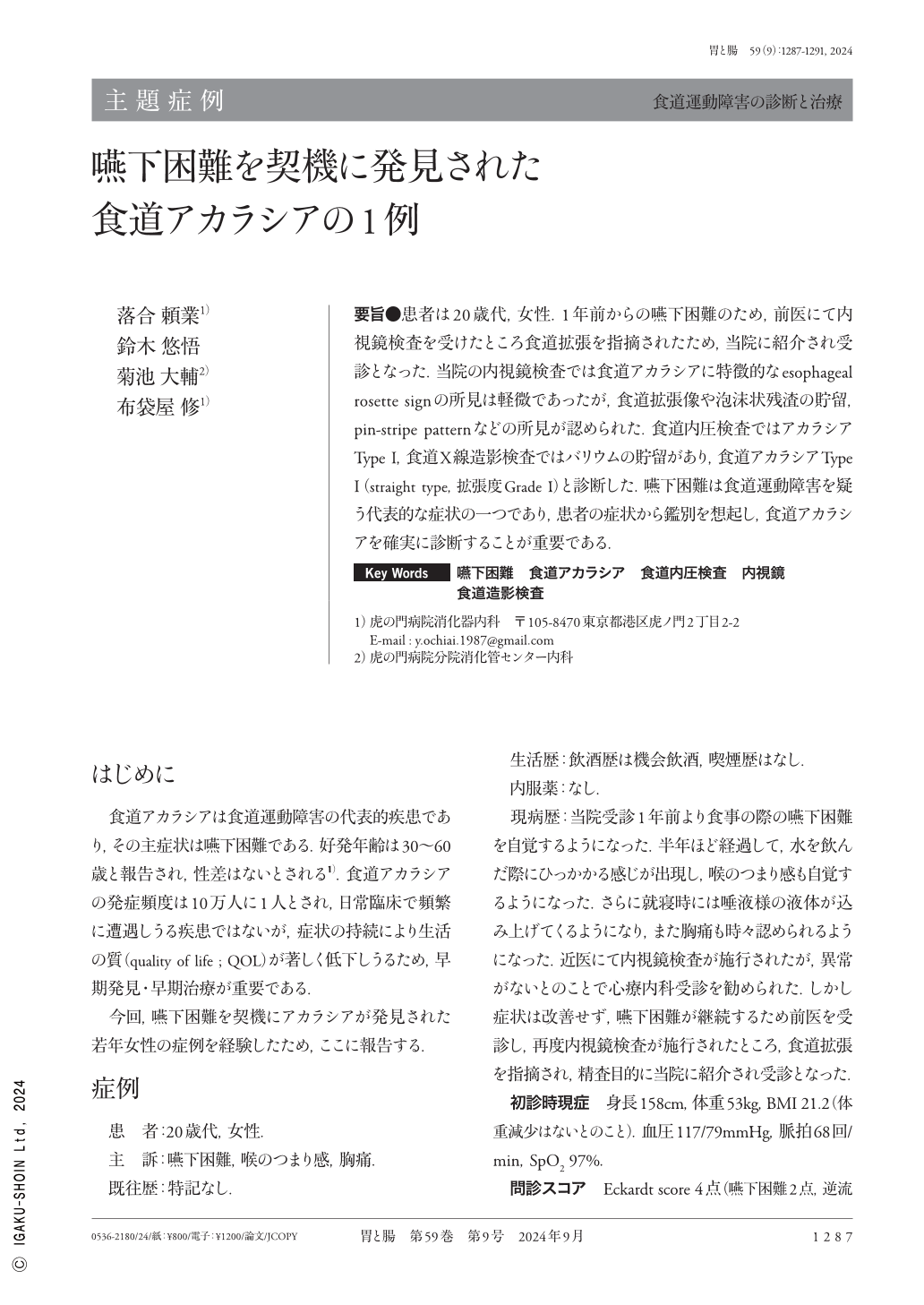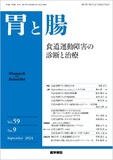Japanese
English
- 有料閲覧
- Abstract 文献概要
- 1ページ目 Look Inside
- 参考文献 Reference
要旨●患者は20歳代,女性.1年前からの嚥下困難のため,前医にて内視鏡検査を受けたところ食道拡張を指摘されたため,当院に紹介され受診となった.当院の内視鏡検査では食道アカラシアに特徴的なesophageal rosette signの所見は軽微であったが,食道拡張像や泡沫状残渣の貯留,pin-stripe patternなどの所見が認められた.食道内圧検査ではアカラシアType I,食道X線造影検査ではバリウムの貯留があり,食道アカラシアType I(straight type,拡張度Grade I)と診断した.嚥下困難は食道運動障害を疑う代表的な症状の一つであり,患者の症状から鑑別を想起し,食道アカラシアを確実に診断することが重要である.
A woman in her 20s who had been suffering from dysphagia for the past year had undergone an endoscopic examination, at her previous hospital, during which an esophageal dilatation was detected. Therefore, she was referred to our hospital for better management. An endoscopy performed at our hospital not only revealed a mild esophageal rosette sign, which is characteristic of esophageal achalasia, but also the esophageal dilatation, residue retention, a pin-stripe pattern and extramural compression of the esophagus by the vertebrae(endoscopic vertebrae sign). An esophageal manometry test revealed Type-I achalasia, and an esophagography revealed barium retention, leading to a diagnosis of esophageal Type-I achalasia(straight type, Grade-I dilatation). Dysphagia is one of the typical symptoms that suggest esophageal motility disorders. Thus, it is important to consider the differential diagnosis based on the patient's symptoms and accurately diagnose esophageal achalasia.

Copyright © 2024, Igaku-Shoin Ltd. All rights reserved.


